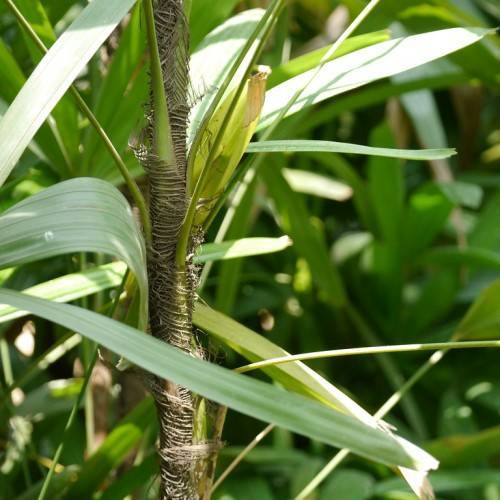
lady palm
Rhapis excelsa
Cycle:
Perennial
Watering:
Average
Hardiness Zone:
9 - 11
Flowers:
Flowers In Spring
Sun:
deep shade,filtered shade,part sun/part shade
Fruits:
Fruits In Summer Ready In
Leaf:
Yes
Growth Rate:
Low
Maintenance:
Low
Drought Tolerant:
Yes
Tropical:
Yes
Indoors:
Yes
Care Level:
Medium
watering
The Lady Palm species is known for its moderate water requirements, which makes it a great choice for an indoor houseplant. To keep your Lady Palm healthy, water it once a week with approximately 1 quart of water. You should reduce this to once a month during the winter months. Feel the soil prior to each watering, if it's damp then you don't need to water. Allow the top 2 to 3 inches of soil to dry out completely between waterings. If your Lady Palm is in a pot without drainage, you should take extra care not to overwater it. When watering, be sure to check the roots and the base of the trunk for any signs of root rot or damage.
sunlight
Lady palms need partial sun or bright indirect light, which means at least 4 hours of sun per day. Too much direct sunlight can cause the leaves of the Lady palm to dry out and yellow. During summer months, it is best to provide indirect light or filtered sunlight for your Lady palm until 11 am and based on the intensity of the heat, the sun exposure should not be more than 4-5 hours. In colder times, you can extend the exposure up to 8 hours.
pruning
Pruning Lady Palms is necessary to keep the plant healthy and looking attractive. Ideally, these plants should be pruned in the late winter or early spring, just before new growth appears. When pruning, look for yellow or brown fronds, or ones that are misshapen and thin. Remove any fronds that are damaged or dead, as well as any that are growing in a way that detracts from the natural shape of the plant. It is also possible to thin out mature fronds to make room for new growth. Be sure to prune carefully, leaving enough foliage to ensure a good rate of growth.
